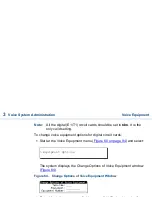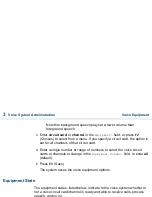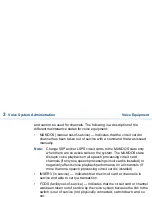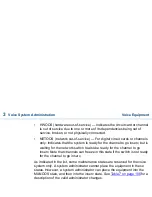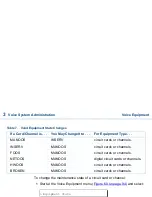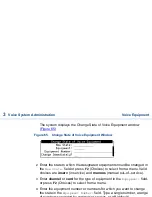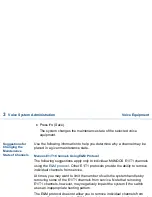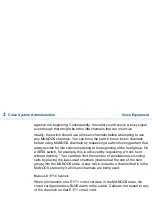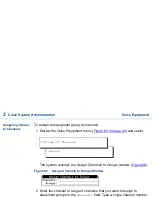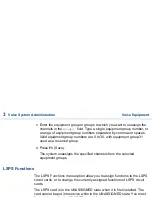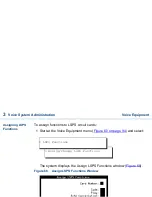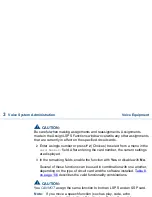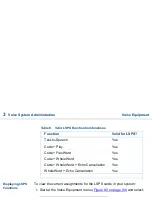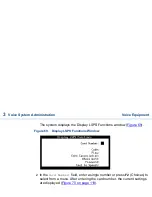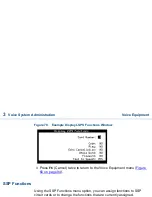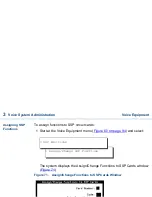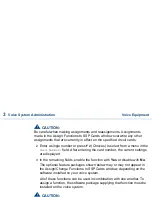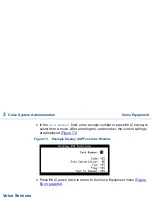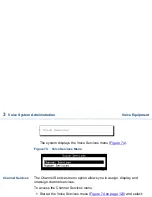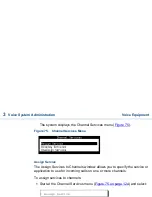
3
Voice System Administration
Voice Equipment
UCS 1000 R4.2 Administration 585-313-507
Issue 3 April 2000 109
again at the beginning. Consequently, the caller could receive a busy signal
even though there might be other idle channels that are in service.
Ideally, the switch should use all inserv channels before attempting to use
any MANOOS channels. You can force the switch to use inserv channels
before using MANOOS channels by requesting a switch hunting pattern that
always scans for idle channels starting at the beginning of the hunt group. On
a 4ESS switch, for example, this is achieved by requesting a “trunk hunt
without memory.” You can then limit the number of simultaneous incoming
calls by placing the least-used channels (channels at the end of the hunt
group) into the MANOOS state. A new call is routed to a channel that is in the
MANOOS state only if all inserv channels are being used.
Manoos E1/T1 Channels
When all channels on a E1/T1 circuit card are in the MANOOS state, the
circuit card generates a BLUE alarm to the switch. Calls are not routed to any
of the channels on that E1/T1 circuit card.
Groups to Channels
The Groups to Channel menu option allows you to assign and unassign
channels to one or more equipment groups. For example, an equipment
group can be dedicated to outbound call bridging so that bridging does not
interfere with incoming calls.








